Ranked: 37 ways you've probably been cooking pasta WRONG
Common pasta faux pas

Ivana P. Nikolic/Shutterstock
Pasta is incredibly versatile and quick to cook, making it perfect for speedy dinners and busy households. But sometimes, despite your best efforts, you can end up with mushy macaroni, slippery spaghetti and overly salty sauces. To help you get your dishes right every time, we've compiled the ultimate list of mistakes most people make when cooking pasta – revealing the tips and techniques you should be using instead.
Read on to discover 37 common pasta cooking mistakes, counting down to the one people make the most.
We've based our ranking on how common the mistakes are and how much they can affect your finished dish, taking into account expert advice, research and the experience of our team. This list is unavoidably subjective.
37. Throwing out leftover pasta
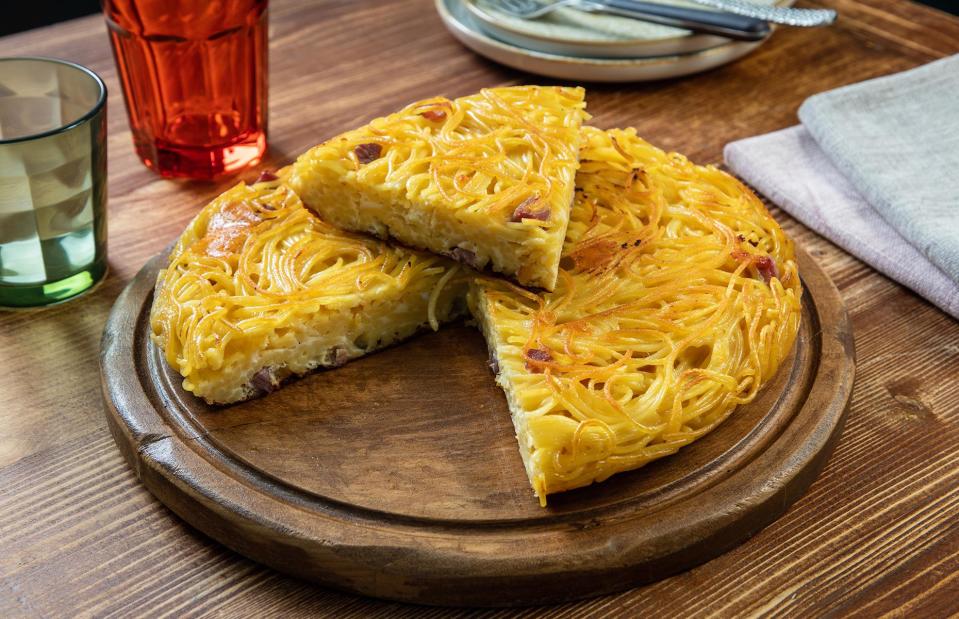
denio109/Shutterstock
Have leftover pasta, but no sauce to eat it with? Don't throw it away! Do as the Italians do and turn it into a frittata di pasta. Mix the cooked pasta with a little sauce (or even a knob of butter), eggs and some grated Parmesan, then cook it in the same way you'd cook an omelette. If you like, you can add frozen peas, tomatoes, chopped sausage or olives for more flavour.
36. Struggling with pre-made cannelloni tubes

Elena Shashkina/Shutterstock
You might find that pre-made cannelloni tubes are quite messy and hard to fill. This is where pre-cooked lasagne sheets come in quite handy; par-boil them until they're just soft enough to mould, place your filling at one end, then roll them up and place them in a baking dish seam-side down. Easy!
35. Boiling dried pasta straight from the packet

Candice Bell/Shutterstock
Dry pasta cooks quickly anyway, so why soak it? The answer is simple – pasta can be rehydrated at any temperature (although you should avoid soaking it in very cold water). Soaking it for a few hours, or even overnight, at room temperature can eliminate the need for boiling it altogether, saving you money on your energy bills. Once the pasta has been soaked, it will only need a couple of minutes' cooking time, just like the fresh pasta you can buy from supermarkets; just add it to your (hot) sauce on the hob.
34. Flavouring your water

Sokor Space/Shutterstock
Some cooks suggest adding aromatics like bay leaves, peppercorns or even bouquets garnis (bundles of herbs commonly used in France to flavour soups, stocks and casseroles) to pasta water. However, there's no point putting all that effort into water that you'll end up discarding most of anyway. Focus your attention on building the flavours in the sauce itself, and use salted pasta water as a way to enhance them.
33. Not considering your altitude

Berndt Juergens/Shutterstock
Do you live at a higher altitude? It’s not something everyone has to worry about, but if your home is far above sea level (or if you're on a camping trip), you'll need to take it into account when cooking. At higher altitudes, the boiling point of water is lower, and the air pressure is higher – which means liquid may evaporate faster, and pasta can take longer to cook. You might need more water for your pasta, and it could require a few more minutes to become al dente, too.
32. Using the wrong flour
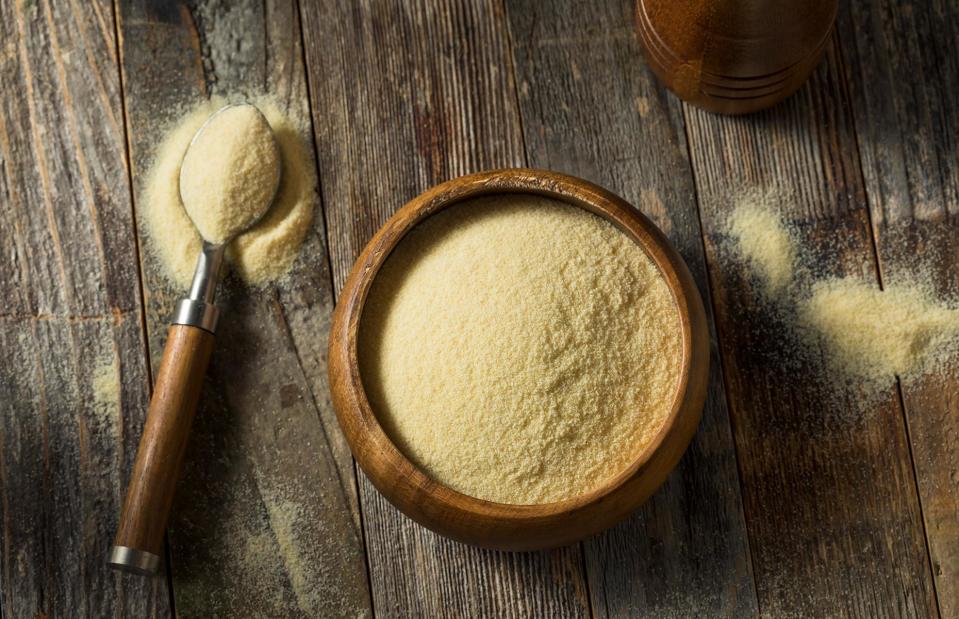
Brent Hofacker/Shutterstock
We've all heard of '00' flour, and know it's the top choice for making fresh pasta – but did you know that this is only the case if you're making egg pasta? For pasta bianca, use semola, or Italian semolina flour. You should never use self-raising flour, as the added baking powder will affect your pasta's texture.
31. Buying low-quality pasta

Vladeep/Shutterstock
You might think that some dried pastas are more expensive simply because of their sleek packaging and brand names, but it's the drying process that really makes a difference. Cheap pasta is dried quicker to produce more, thus trapping underdeveloped starch proteins inside – leading to inferior texture and flavour.
30. Not kneading your pasta dough

Anton Chernov/Shutterstock
Trying your hand at homemade pasta? Don't forget to knead your dough. Kneading will help gluten to form, allowing your dough to stretch and hold its shape. Pasta dough might seem like it needs less kneading than a bread dough, but it actually needs more; your dough could require kneading for a good 15 minutes to get it pliable and elastic, so don’t give up too soon.
29. Allowing your dough to dry out

Polyanskaya Olga/Shutterstock
Pasta dough dries out pretty quickly if you’re not careful – and a dry dough means tough pasta. When you’re making fresh pasta, take steps to prevent this by covering it up whenever possible. Wrap your ball of dough when it’s resting, and cover it when separating it into balls. It'll be easier to put through your pasta machine if it’s still soft.
28. Using eggs in all types of dough
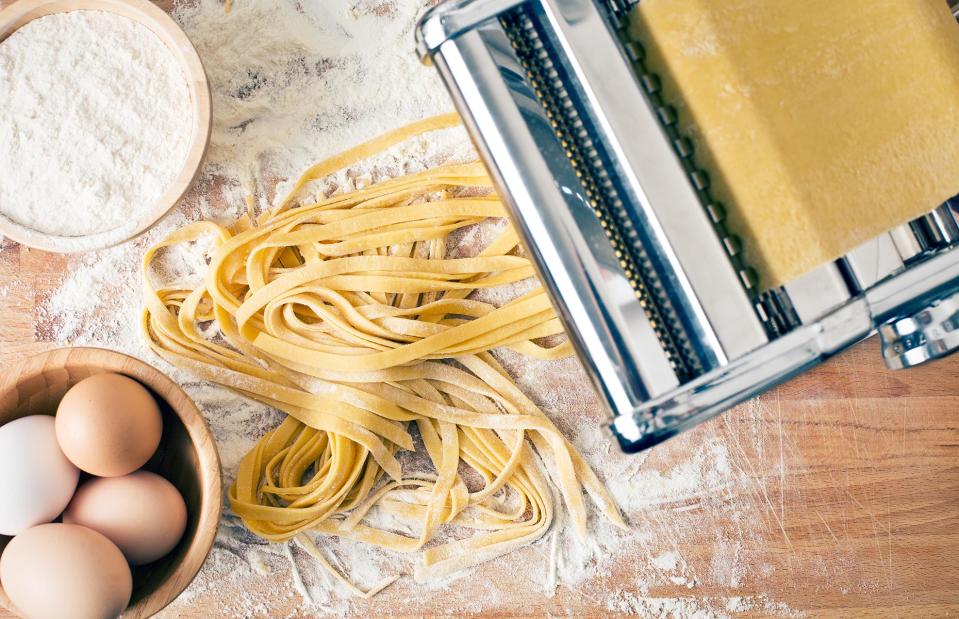
iri Hera/Shutterstock
You've probably seen TV chefs incorporating flour into golden egg yolks to make fabulous-looking pasta – but the truth is, not all pasta doughs require eggs. Traditional egg pasta is perfect for recipes where you need to shape and manipulate the dough, such as ravioli and tortellini. It's also good for long shapes, like pappardelle, due to its durability. Pasta bianca is made without eggs, and is good for both small shapes (orecchiette, for example) and dumpling-like shapes, like strozzapreti.
27. Using cold pasta in salads

Igor Dutina/Shutterstock
It might seem more intuitive to let your pasta cool down a little before assembling a salad and mixing it with sauce – especially if you're using a creamy sauce. However, if you add your dressing while the pasta is still warm, it'll absorb the flavours better (and taste much less like a ready-made supermarket lunch deal).
26. Neglecting to toss leftover pasta in oil

Andrey Starostin/Shutterstock
Got leftover pasta that's sauce-free? This is the one time when tossing it in oil is a smart idea (it's usually best avoided, as it can prevent sauce from adhering to the pasta). A little olive oil will help to stop leftover pasta drying out, so you can store it in the fridge overnight and enjoy it the next day. Only use a small amount – a tablespoon or two – so it’s just enough to keep your pasta moist. That way, it won't prevent sauce from clinging when it's time to reheat it.
25. Overcooking filled pasta

Jannissimo/Shutterstock
Filled pasta (such as ravioli and tortellini) will float to the top of the cooking water when ready. This is because they fill with air, which buoys them to the top of the pot. Watch carefully, and remove them as they float to the surface – unless you’re about to cook them again in the oven, in which case you should try to remove them a little before they're ready, so they can finish cooking in the dish.
24. Underfilling pasta

hybridimages/Shutterstock
Working hard on fresh ravioli, tortellini or other filled pasta shapes only to have them burst in the cooking water is so disappointing. You might think it’s overfilling that causes this, but it’s important to fill your pasta parcels generously. A tightly packed filling will help to prevent too much air from getting in and causing the shapes to split. To remove any air bubbles, be sure to seal around the filling before closing up and shaping the pasta.
23. Breaking spaghetti
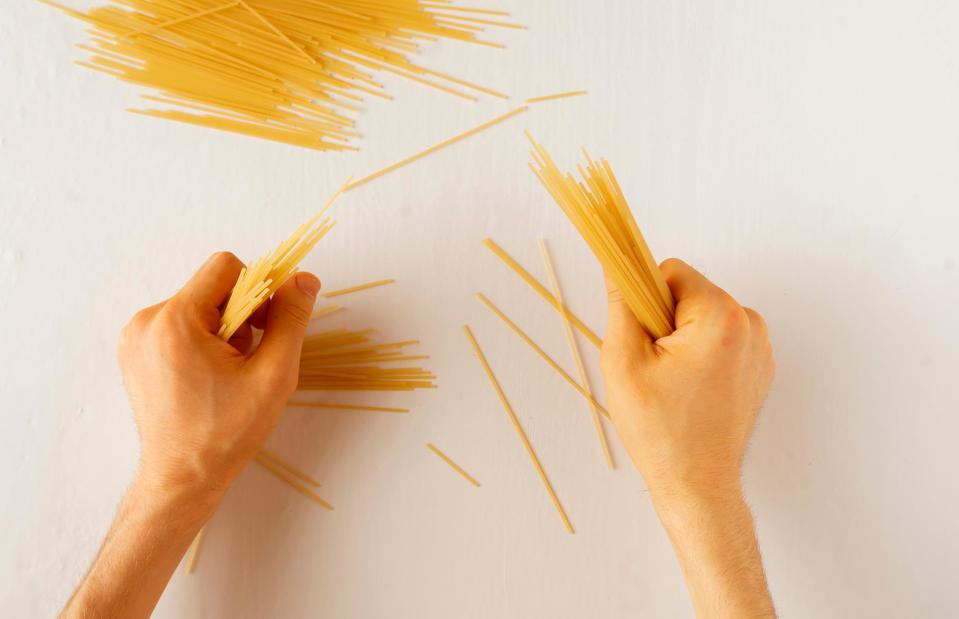
Mike_shots/Shutterstock
Some people suggest that breaking spaghetti in half will help it to cook more evenly. However, if you break up the strands, it'll make them much harder to eat. Instead, add your spaghetti to a pot of boiling water and stir for the first minute, slowly twirling the strands as they soften. After that, the pasta can be submerged completely.
22. Reheating your pasta wrong

Vinicius Bacarin/Shutterstock
There's an art to reheating pasta. For the best results, reheat your leftover shapes in a pan on a low heat (or, if it's a pasta bake, warm it in the oven). If your only option is a microwave, add a tablespoon or two of water to the dish – not only will this prevent the sauce from drying out, but it'll also ensure the pasta stays soft.
21. Using cream when making carbonara
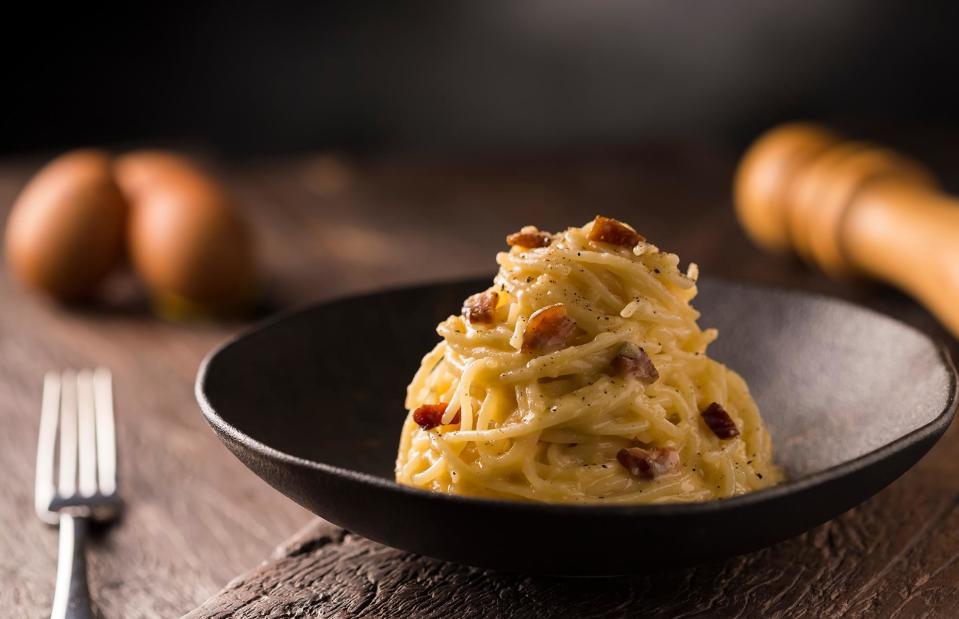
Brent Hofacker/Shutterstock
For a luscious sauce packed with flavour, stop making your carbonara with cream. If your eggs tend to scramble when making this dish the authentic Italian way, here's an easy solution: in a bowl off the heat, combine some finely grated pecorino and Parmesan, then add coarsely ground black peppercorns, a whole egg and three egg yolks. Whisk together, then slowly add some of the starchy pasta water and incorporate until you have a thick, smooth sauce. Combine with spaghetti and some pasta water, then finish in the pan for 30 seconds on a low heat.
20. Treating gluten-free pasta like regular pasta

DariaKM/Shutterstock
Gluten-free pasta is more readily available than it’s ever been – but there's a catch. This type of pasta cooks a little differently, so if you're not careful, you could end up with a sticky, gloopy mess. Gluten-free pasta can be made with a few different ingredients, from rice flour to legumes, so it’s important to pay attention to the packet instructions. It can often be starchier than regular pasta, so you'll need to allow more room in the pot as it foams. Not only that, but you might need to stir it more often to prevent sticking, too.
19. Using a spoon to twirl long pasta

aaleenaf/Shutterstock
In Italy, you'll only ever be given a spoon to eat your pasta if you've ordered tortellini in broth. Otherwise, best practice is to simply twirl your pasta strands with your fork. Yes, this can be messy, and it takes a bit of practice to master the skill, but making a bit of a mess is still better than cutting pasta with a knife – something you should never do.
18. Always using a pasta maker

Natasha Breen/Shutterstock
There’s no denying that a pasta maker is useful to have. However, if you’re new to making your own pasta and don’t want to invest in one, you'll be pleased to know that it's not an essential item. You can make pasta with a rolling pin, even if it takes a little bit more work to get it thin enough to cut the shapes you want.
17. Choosing the wrong pasta shapes

kuvona/Shutterstock
There's a science behind which pasta shapes and sauces pair together best. For example, you'll rarely see an Italian serving a thick sauce paired with thin ribbons; shells or tubes will capture the sauce better. The general rule of thumb is to match chunkier sauces with larger, more robust shapes, and to team creamier sauces with thinner, longer shapes.
16. Overlooking simple recipes
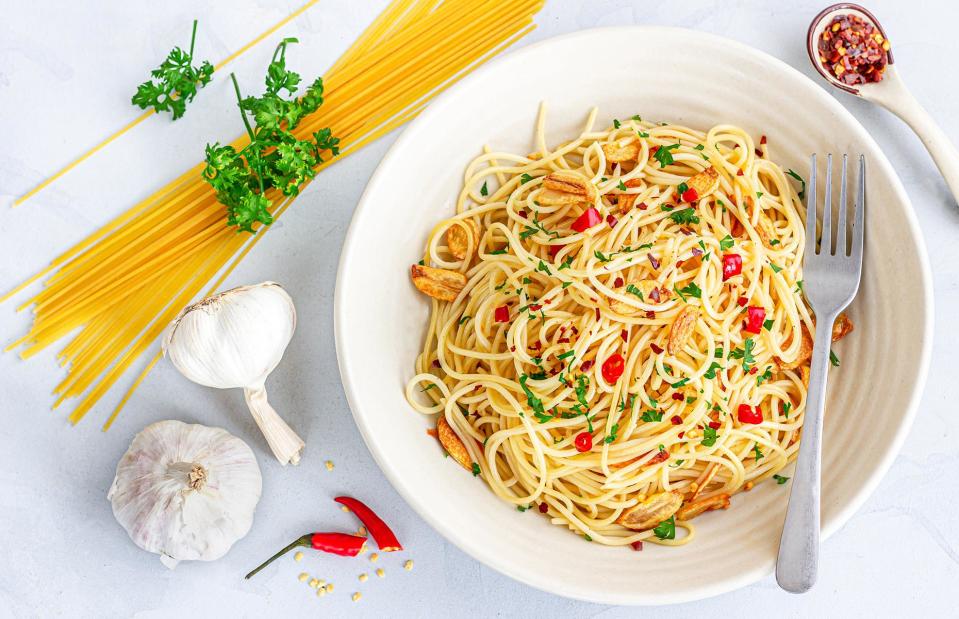
Brent Hofacker/Shutterstock
Not every pasta recipe requires patience. There are flavour combinations that take no time at all, so you don't have to wait around when you're hungry. For example, a simple prawn, garlic and chilli pasta won't take more than 10 minutes to rustle up. The same goes for classic cacio e pepe and pasta puttanesca – a famously flavoursome, thrifty favourite.
15. Rinsing your pasta
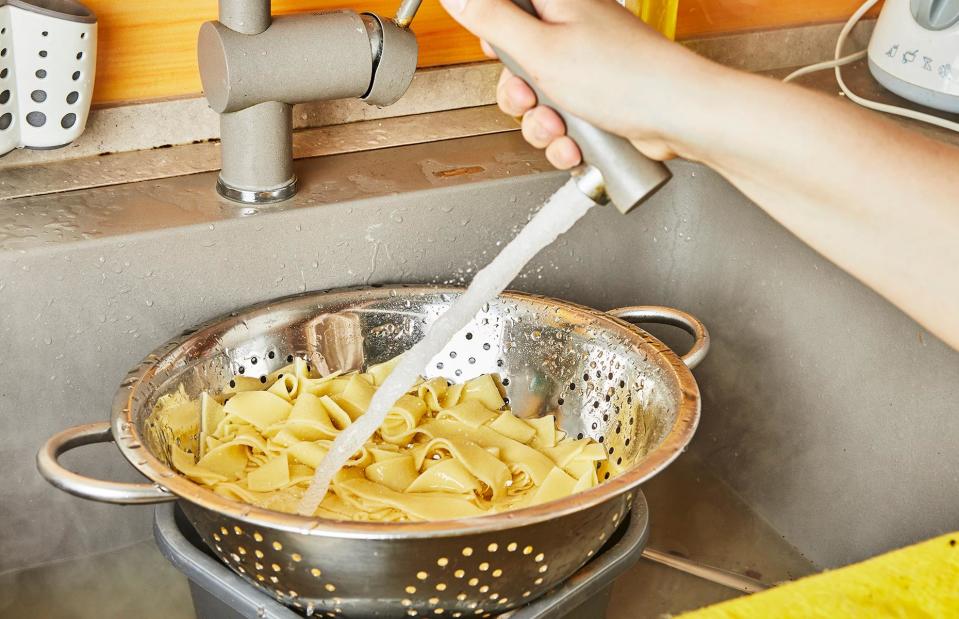
AlexDonin/Shutterstock
After draining your pasta, rinsing it with cold water to prevent it from cooking further (and sticking together) is almost always a bad idea; you'll simply end up washing away the starch that's essential for a silky-smooth sauce. The only time you should rinse your pasta is if you're cooking it to add to a pasta salad. Similarly, don't let your pasta sit drained in the colander for too long – it'll clump together and overcook in the middle.
14. Throwing pasta at the wall
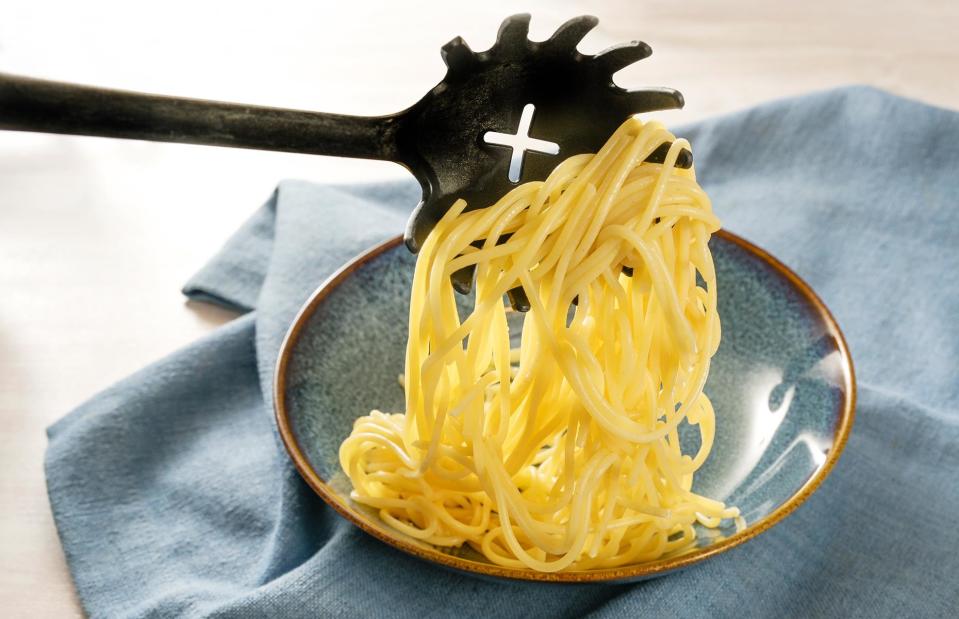
Maren Winter/Shutterstock
We've all heard the old myth about throwing pasta against the wall and seeing if it sticks – if it does, it supposedly means it's ready. We have our doubts as to whether anyone has ever actually tried it, but it's a sure-fire way to make a mess in your kitchen (and waste food for no reason).
13. Guessing how much pasta you need

Kamil Zajaczkowski/Shutterstock
Trying to guess the perfect amount of pasta to make can result in epic portions, with the potential for some pasta to go to waste. However, if you take a moment to weigh it out, you’ll have just enough to serve everyone. As a rule of thumb, a recommended adult portion is 2.6oz (75g) dry pasta, or 5.3oz (150g) cooked pasta.
12. Using a pot that's too small
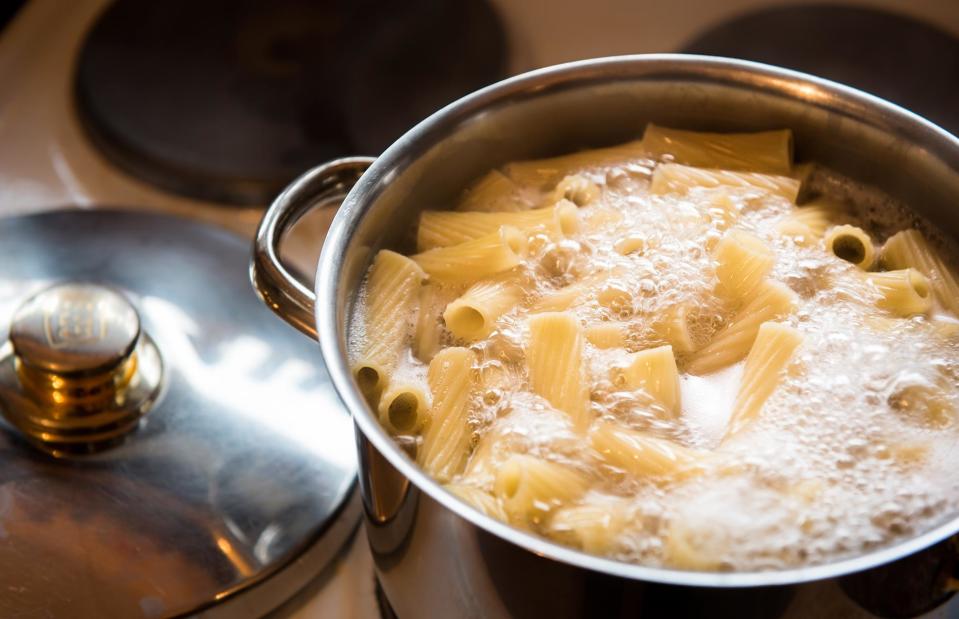
Ivana P. Nikolic/Shutterstock
A sure-fire way to make sure your pasta clumps together and cooks unevenly is boiling it in a small pot. Make sure there's enough water and space for the pasta to float around freely. The gold standard is 33fl oz (1l) of water for 3.5oz (100g) pasta.
11. Overcooking pasta

Sokor Space/Shutterstock
Nobody likes mushy, overcooked pasta, so pay attention to the cooking instructions on your pasta packet – they should help you achieve perfectly al dente results. Each pasta shape or strand should be soft throughout, without any crunch, but still firm and holding its shape. It's important to cook pasta al dente to prevent the gluten from overdeveloping and the pasta from going too soft. Don't forget the all-important taste test to check your pasta has the perfect bite.
10. Using a colander to strain pasta

Chursina Viktoriia/Shutterstock
A pasta skimmer, sometimes called a spider or strainer, is a handy little tool to have. There are a couple of advantages over using a colander. Firstly, there’s no need to lift a pot of boiling water and potentially risk burning yourself as you pour it out. Secondly, it makes it easier to keep a little of the pasta water to use in your sauce later. Plus, it's also great for skimming off gnocchi and filled pasta as it floats to the surface. For longer pasta, use a spaghetti spoon or tongs.
9. Pre-soaking lasagne sheets
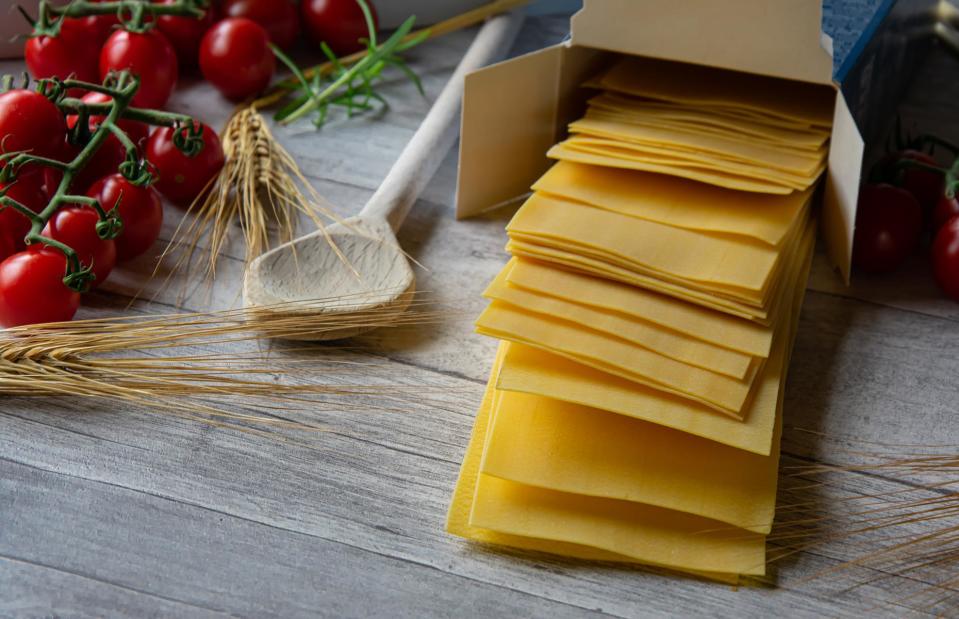
Angelika Heine/Shutterstock
Lasagne takes a while to cook in the oven, and the sauces around the sheets reach boiling temperature pretty quickly. If you pre-boil your lasagne sheets, they'll be overcooked by the time your lasagne comes out of the oven. When assembling, just be sure to cover all of the corners with sauce to ensure the sheets are completely submerged.
8. Not adding salt to pasta water

Krasula/Shutterstock
Adding salt to pasta water doesn't make it boil faster (that's an old wives' tale). The reason you need to salt the water is because it flavours both the pasta and the sauce. Even if you're not adding any saved pasta water to your sauce, there will be water clinging to the pasta when you add it in – and if your pasta is unseasoned, it will dilute the flavour you've worked so hard to build. Top tip: wait until the water is boiling before you add your salt, so it dissolves instantly. Otherwise, it'll just sink to the bottom and cause pitting (a form of rusting in stainless steel).
7. Or adding too much salt

Catarina Belova/Shutterstock
You might have heard that your pasta water should be ‘salty like the sea’ – but the truth is that the sea is much saltier than your pasta water should be. If you salt your water like the ocean (which has a salinity of around 3.5%), you'll end up with pasta that’s not very pleasant to eat. So, take this advice with a pinch of salt, and only use around a tablespoon per 66fl oz (2l) water.
6. Rushing your sauces
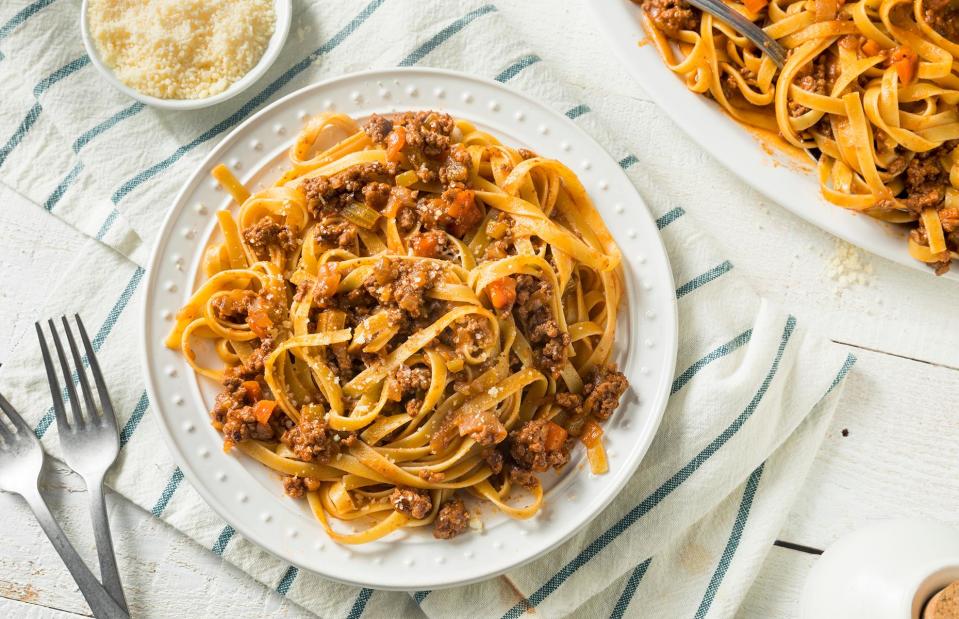
Brent Hofacker/Shutterstock
It takes time for the harsh, acidic flavours in many tomato-based sauces to mellow – so don't think you can make a good Bolognese in half an hour. These sauces take time and effort, and are best cooked low and slow. However, they freeze and reheat really well, so take the time to cook one big batch and freeze it in portions.
5. Adding oil to pasta water

KLphotographer/Shutterstock
It's a myth that oily cooking water stops pasta sticking together. If you add oil to your pasta water, it'll coat each pasta shape with a greasy layer that will prevent sauce from sticking to it – in fact, it will just slide right off. Instead of wasting oil, simply stir your pasta a couple of times while it's boiling to ensure your shapes stay separate.
4. Not testing your pasta before the cooking time is over

nitr/Shutterstuck
It’s always best to check the cooking time on your pasta packet, as recommended times can vary for different brands and shapes. Remember, though, that these are only guidelines; following them exactly could lead to your pasta being undercooked or overcooked. Test your pasta a couple of minutes before the stated cooking time is up – that way, you can check if it’s approaching al dente. It might even already be there!
3. Putting pasta in water that's not yet boiled
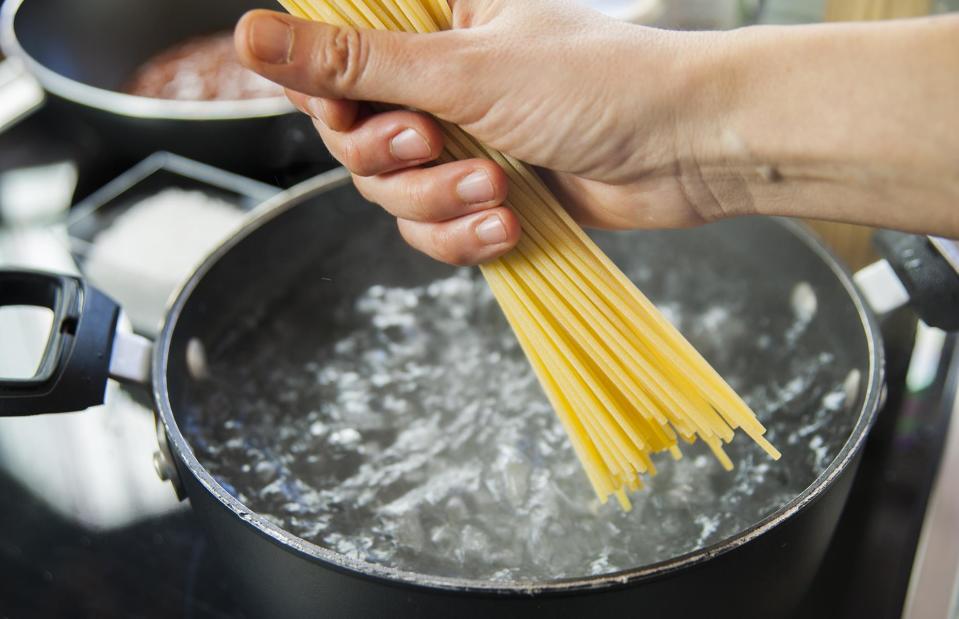
dibettadifino/Shutterstock
Heat is what releases the starch in pasta – so as soon as it hits even warm water, the starch will start to develop, and the pasta will stick and clump together. To ensure your pasta cooks properly, wait for the water to boil, and cook it for the time indicated on the packet.
2. Adding sauce to pasta, not the other way around
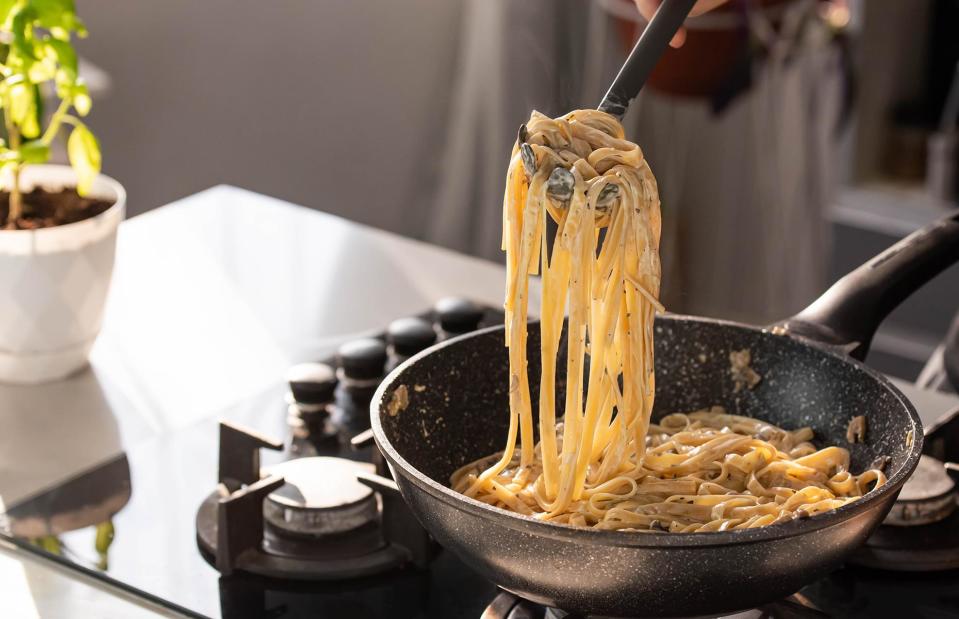
Anna Strigana Fedotova/Shutterstock
If you're serious about perfecting your pasta, you should always undercook your pasta by a minute or so, then finish it off in the sauce to give the dish a superior flavour. You'd be surprised how much flavour you lose by serving cooked pasta with the sauce simply poured over the top.
1. Always adding cheese
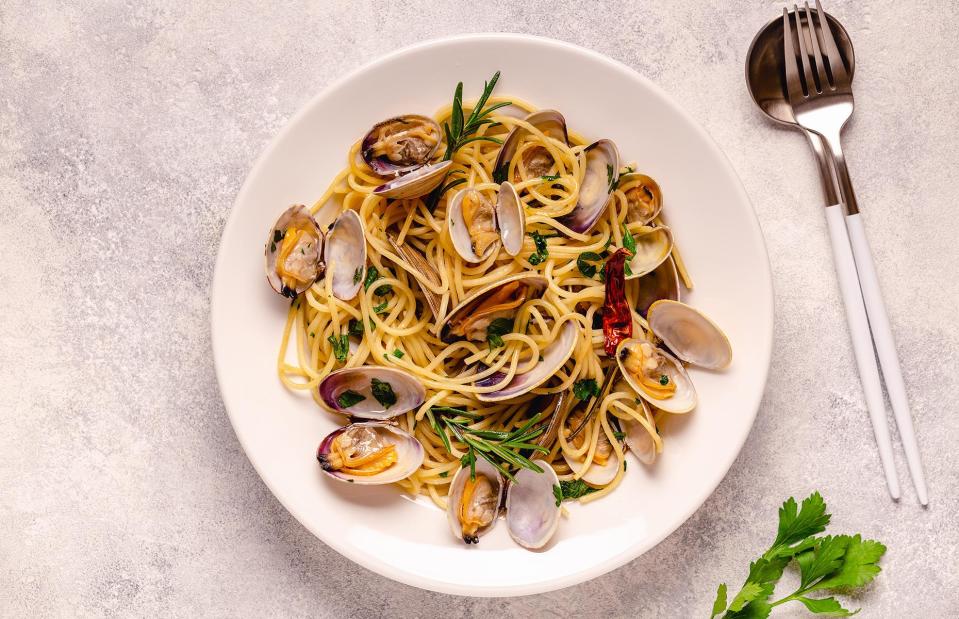
Tatiana Bralnina/Shutterstock
However much you love cheese, there are some pasta sauces that not only don't need cheese, but are tastier without it. For example, most pasta dishes with seafood or fish are better without cheese. Similarly, cheese should traditionally be avoided when serving spicy pasta dishes loaded with chilli and garlic.
Now discover our most comforting pasta recipes ever
Last updated by Laura Ellis.


